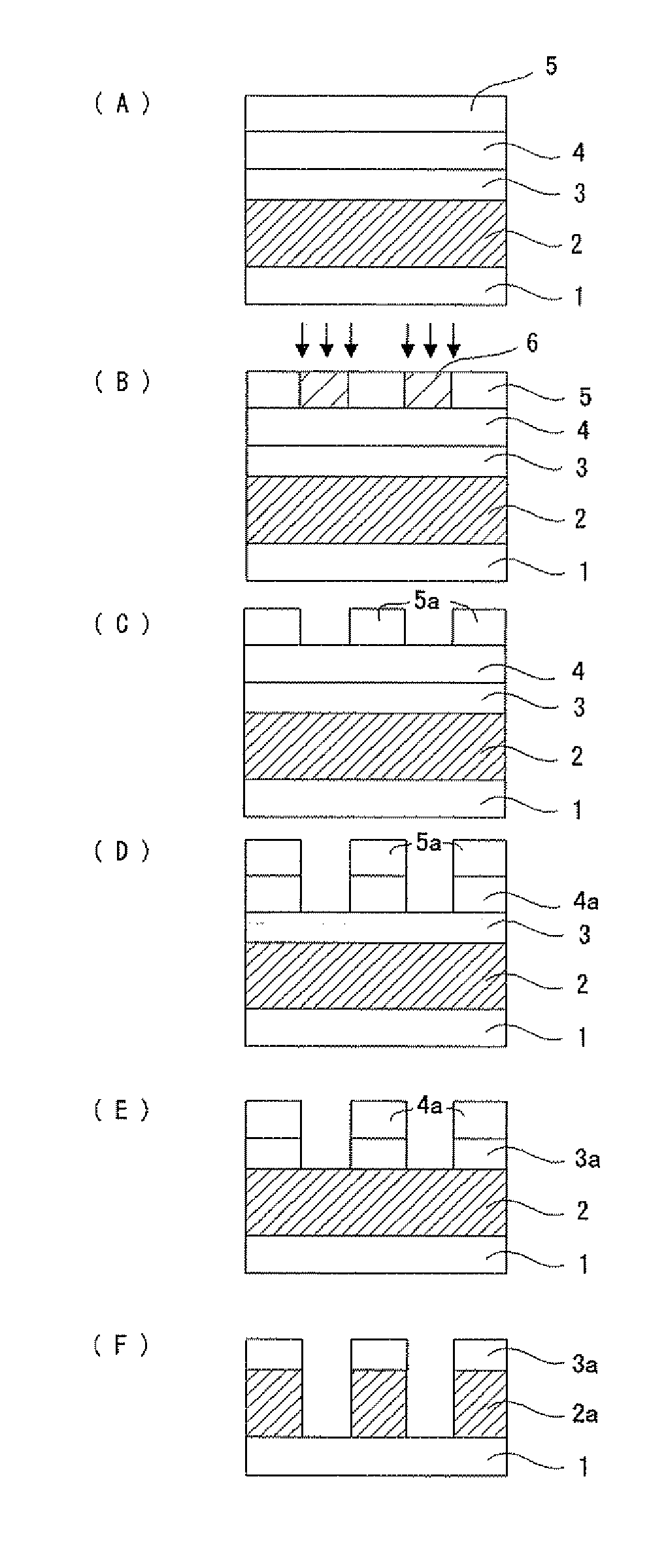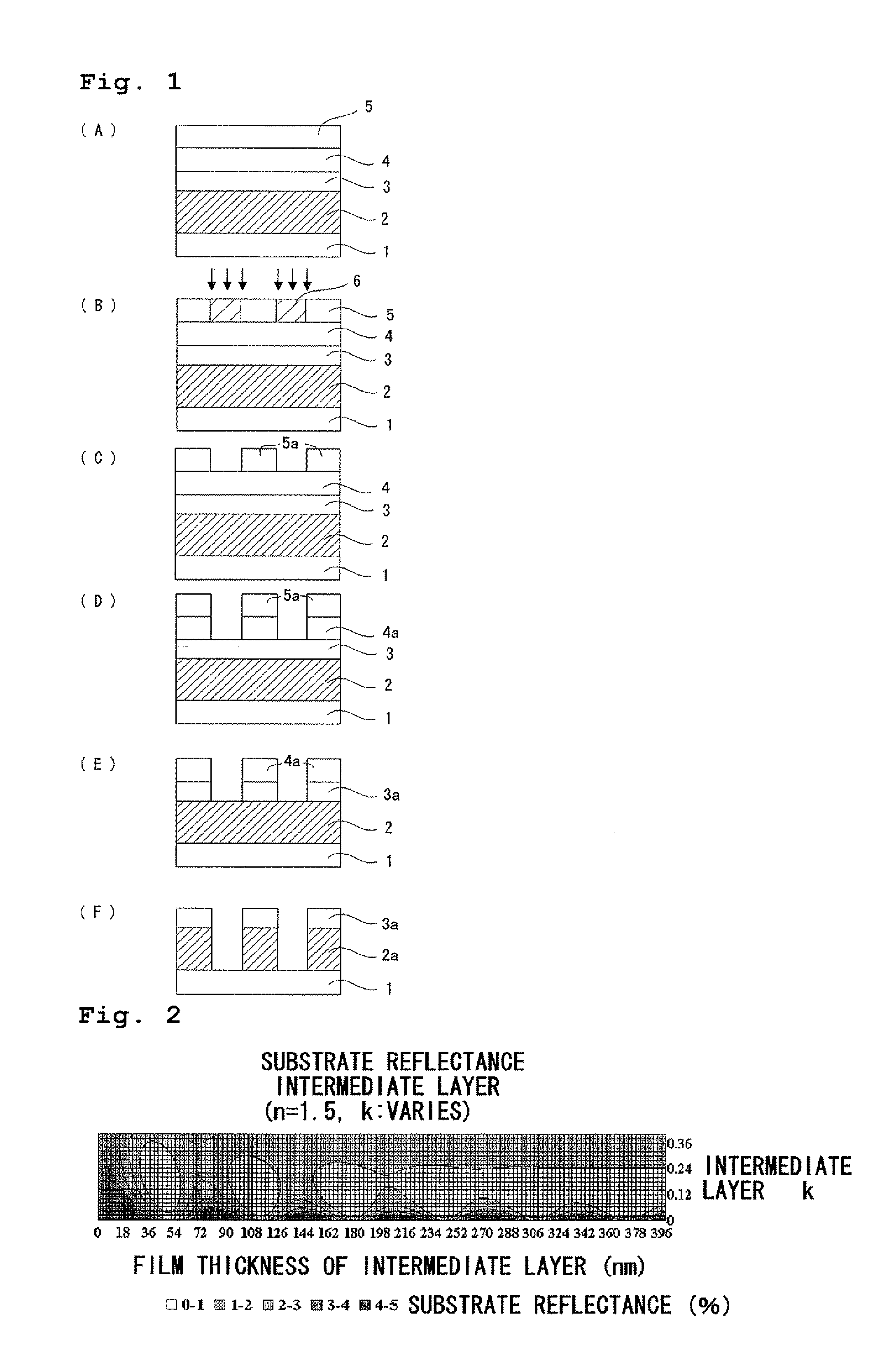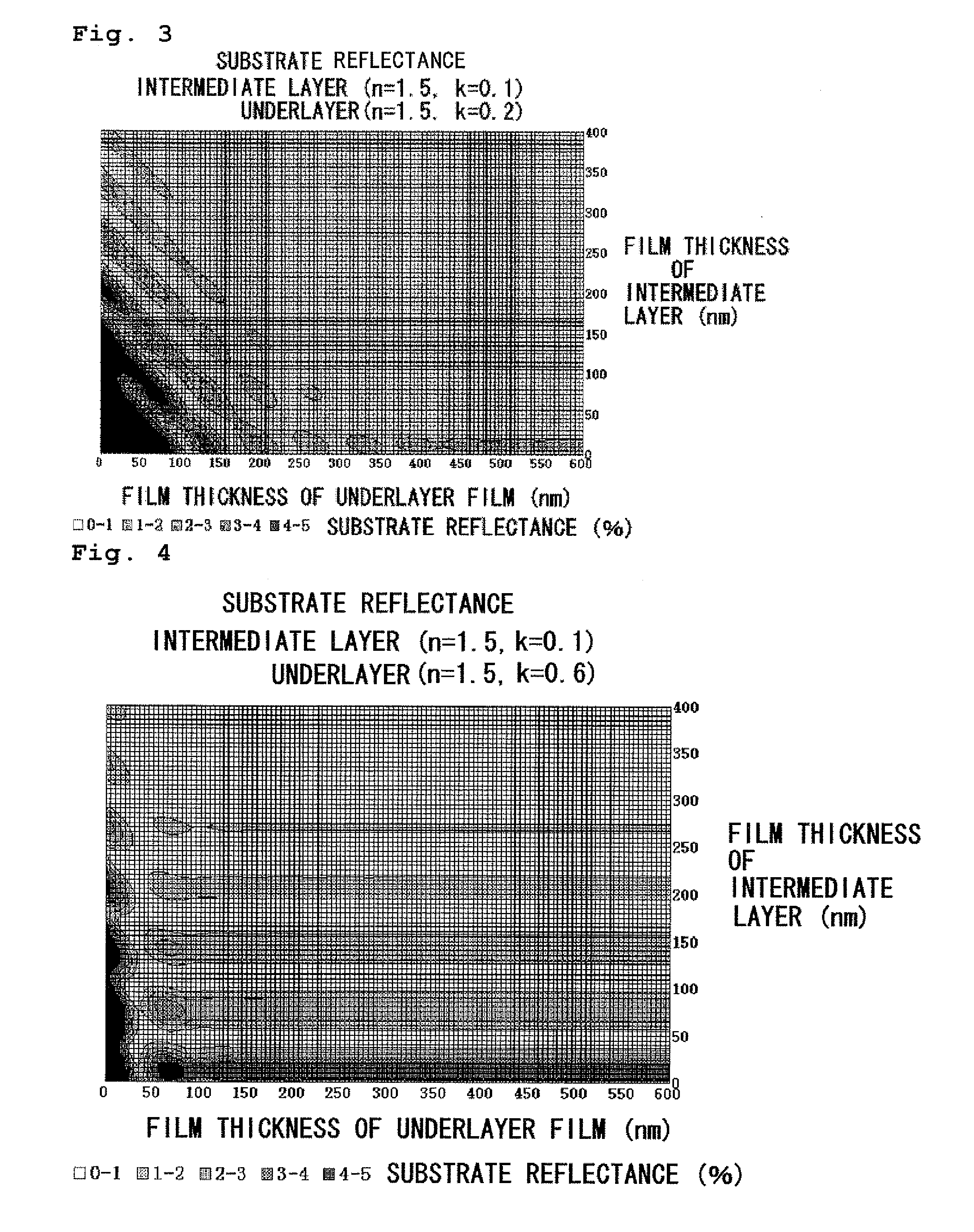Resist underlayer film composition and patterning process using the same
- Summary
- Abstract
- Description
- Claims
- Application Information
AI Technical Summary
Benefits of technology
Problems solved by technology
Method used
Image
Examples
synthesis example 1
[0135]Into a 1,000-mL flask was taken 80 g of 1,5-dihydroxy naphthalene (0.50 mole), 51.6 g of 2-hydroxy-6-naphtoaldehyde (0.30 mole), and 145 g of methyl cellosolve; and then, into the resulting mixture was added 20 g of a methyl cellosolve solution containing 20% by weight of p-toluenesulfonic acid with stirring at 70° C. After stirring was continued at 85° C. for 6 hours, the content therein was cooled to room temperature and diluted with 800 mL of ethyl acetate. The mixture was transferred to a separation funnel and washed with 200 mL of deionized water repeatedly to remove the reaction catalyst and metal impurities. After the obtained solution was concentrated under reduced pressure, 600 mL of ethyl acetate was added to the residue, and then a polymer was precipitated by 2,400 mL of hexane. The precipitated polymer was collected by filtration and then dried under reduced pressure to obtain Polymer 1.
[0136]The weight-average molecular weight (Mw) (relative to polystyrene standar...
synthesis examples 2 to 14
, of which Synthesis Examples 13 and 14 are Comparative Synthesis Examples
[0137]Polymers 2 to 14 shown in Table 2 were obtained by using the materials shown in Table 1 under the same reaction condition as Synthesis Example 1.
TABLE 1Reac-SynthesisCompond (1-1)ReactiontionCompound (2-1)CompoundExampleand / or (1-2)solventcatalystand / or (2-2)(3)1 80 gmethyl cellosolve 145 gA 20 g 51.6 g—2 80 gmethyl cellosolve 145 gA 20 g 25.8 gparaform aldehyde 4.5 g3 80 gmethyl cellosolve 145 gA 20 g 51.6 g—4 72 gmethoxy propanol 290 gB 20 g 51.6 g—5 80 gmethoxy propanol 290 gB 20 g 22.8 g 25.8 g—6 80 gmethyl cellosolve 200 gA 20 g 41.1 g—7 79 gmethoxy propanol 290 gB 20 g 41.1 g 4.0 g8 80 gmethoxy propanol 290 gB 20 g 28.2 g 18.3 g9 36 g 40 gmethyl cellosolve 145 gA 20 g 56.4 g—10 56 g 16 gmethyl cellosolve 145 gA 20 g 39.6 g 10.6 g11 32.4 gmethyl cellosolve 145 gA 20 g 51.6 g—12 32.4 gmethyl cellosolve 145 gA 20 g 56.4 g—(Comparativ...
PUM
| Property | Measurement | Unit |
|---|---|---|
| Wavelength | aaaaa | aaaaa |
| Wavelength | aaaaa | aaaaa |
| Percent by mass | aaaaa | aaaaa |
Abstract
Description
Claims
Application Information
 Login to View More
Login to View More - R&D
- Intellectual Property
- Life Sciences
- Materials
- Tech Scout
- Unparalleled Data Quality
- Higher Quality Content
- 60% Fewer Hallucinations
Browse by: Latest US Patents, China's latest patents, Technical Efficacy Thesaurus, Application Domain, Technology Topic, Popular Technical Reports.
© 2025 PatSnap. All rights reserved.Legal|Privacy policy|Modern Slavery Act Transparency Statement|Sitemap|About US| Contact US: help@patsnap.com



